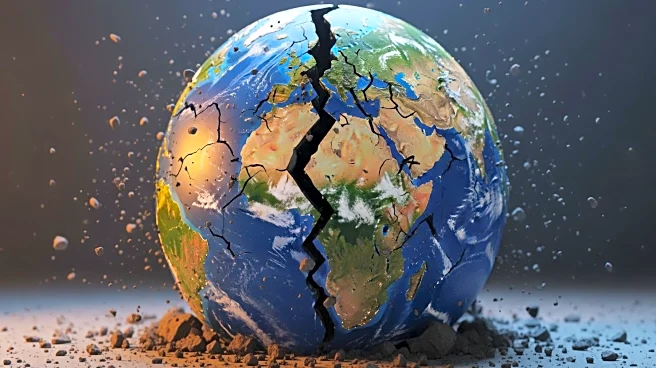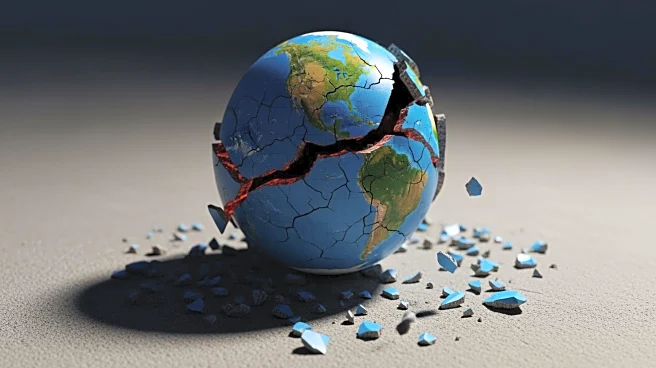What's Happening?
A powerful magnitude 6.3 earthquake struck near Mazar-i-Sharif, one of northern Afghanistan's largest cities, resulting in at least five deaths and numerous injuries. The earthquake occurred at a depth
of 28 kilometers and was felt in neighboring countries including Tajikistan, Uzbekistan, and Turkmenistan. The United States Geological Survey (USGS) issued an orange alert predicting potential economic and human losses. The earthquake caused significant damage, including to the Blue Mosque in Mazar-i-Sharif, a major architectural and religious site. The region experienced at least five aftershocks, with the strongest measuring 5.2 in magnitude.
Why It's Important?
The earthquake highlights Afghanistan's vulnerability to natural disasters, exacerbated by a lack of international aid following the Taliban's takeover in 2021. The country's limited resources and infrastructure challenges hinder effective disaster response and recovery efforts. The damage to the Blue Mosque underscores the cultural and historical impact of such events. The earthquake's effects on neighboring countries also emphasize the regional implications of seismic activity in this area. The situation draws attention to the need for improved disaster preparedness and international support to mitigate future risks.
What's Next?
As the situation develops, the focus will likely be on assessing the full extent of the damage and providing aid to affected communities. International organizations and neighboring countries may offer assistance to support recovery efforts. The Afghan government and local authorities will need to coordinate relief operations and address the immediate needs of those impacted. Long-term strategies may involve strengthening infrastructure and enhancing disaster response capabilities to better withstand future earthquakes.
Beyond the Headlines
The earthquake raises questions about the resilience of Afghanistan's infrastructure and the effectiveness of current disaster management strategies. The cultural significance of damaged sites like the Blue Mosque may prompt discussions on preserving heritage in disaster-prone areas. Additionally, the event could influence regional cooperation on disaster preparedness and response, highlighting the importance of cross-border collaboration in addressing shared challenges.











